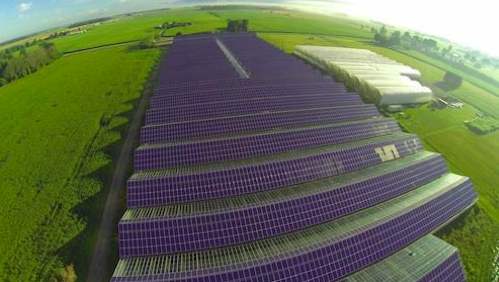US group Enphase Energy – the world’s biggest supplier of micro-inverters – says Australia could become its second biggest market (behind the US) if policy settings remain favourable.
Paul Nahi, the CEO of the California-based Enphase Energy, visited Australia this week following the recent opening of offices in Melbourne and Sydney, and the establishment a corporate base in Australia for the Asia-Pacific.
“Despite the huge growth and value of the solar market, which is about $150 billion plus, solar is still very, very small compared to total energy generation. We are still just at the early days in solar, we are just starting,” he told RenewEconomy in an interview.
“The economics are … getting better; the cost of fossil fuel energy is continuing to go up; the cost of solar is coming down because of reduced costs and increasing efficiencies, and there is still a lot of head-room to improve it.
“That is why I think those countries that in any way restrict solar would be on the wrong side of history. Right now, governments have opportunity to own this space, create centres of excellence, and to become leaders.
“Clearly Australia has a strong rooftop market, and strong solar infrastructure. We very very excited about the possibilities here.
Inverters are an essential part of a rooftop solar system, converting the electricity generated from the solar modules from DC (direct current), back to form suitable for the grid. Micro-inverters are different to string inverters because they attach to a single panel, and can lift the output of a solar array.
(With string inverters, if the output of one panel is reduced by shading, dust or another obstruction, then the output of the whole array is affected. Micro-inverters are also easier to install).
Micro-inverters now capture nearly 50 per cent of the rooftop solar market in the US and Enphase are credited with a 73 per cent share of the global micro-inverter market.
Australia has already installed more than 3.1GW of rooftop solar on homes across the country, although the number with micro-inverters remains small, at less than 5 per cent of installations.
Nahi thinks that will change as customers focus more on return on investment from their solar installations, rather than just relying on subsidies as they had in the past.
“Clearly Australia has a strong rooftop market, and strong solar infrastructure. We very very excited about the possibilities here, and using it as a base for our business in the Asia-Pacific.
“There are not many residential markets that are as large as Australia.”
Nahi notes that the controversy around energy policy in Australia, and the uncertainty about renewable incentives is not unusual, because energy policy is highly polarizing in most markets around the globe.
“What we see going on in Australia, the effect on (the price of) renewable energy certificates is not that unusual,’ he said.
“If were to only enter market that had predictable and stable policies for the next 10 years, we wouldn’t be in business.
“But clearly what we want to see is a policy that is supportive of the 18,000 plus employees in the solar industry in Australia, and which enables Australia to be centre of excellence for the Asia Pacific region.
“What the industry would want is for solar incentives to act as a catalyst, not a crutch. That means a quantifiable, predictable, decrease over a period of years. If that is done intelligently, then we can wean the industry off subsidies altogether.”










